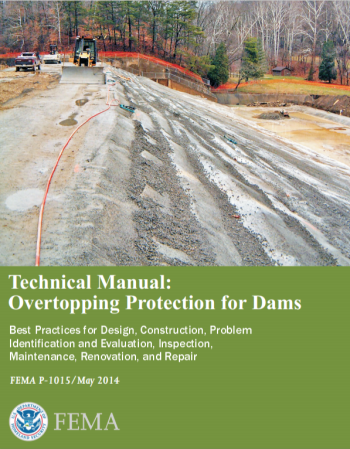Technical Manual: Overtopping Protection for Dams (FEMA P-1015)
Federal Emergency Management Agency, 2014

Inadequate spillway capacity is a common problem with many dams. Thousands of dams throughout North America have been determined to have inadequate spillway capacity and would be overtopped during the inflow design flood (IDF), which is often equated to the probable maximum flood (PMF) or to some frequency flood associated with a particular return period. The PMF is defined as the flood that may be expected from the most severe combination of critical meteorologic and hydrologic conditions that are reasonably possible in the drainage basin under study (Federal Emergency Management Agency [FEMA], 2004). Reservoir inflow from storm events which exceeds the available storage and/or spillway discharge capacity can result in the dam being overtopped. Dam failure from overtopping can lead to a potential for loss of life and significant downstream damages.
There are many methods available for accommodating larger revised floods. However, some of the more common methods, such as increasing reservoir storage by raising the dam crest or increasing release capability by increasing the spillway discharge capacity, can often be cost prohibitive or impractical. To address this situation, new design approaches have been developed that may allow for the dam to be safely overtopped. The design and construction of overtopping protection for dams is increasingly being viewed as a viable alternative to larger spillways as developing watersheds or changing hydrology produce higher peak flows and the need for additional spillway discharge capacity for existing dams.
Revision ID: 5835
Revision Date: 12/16/2022
